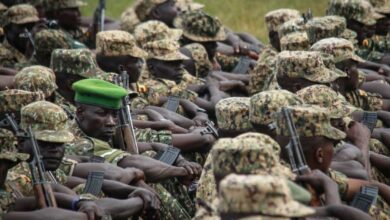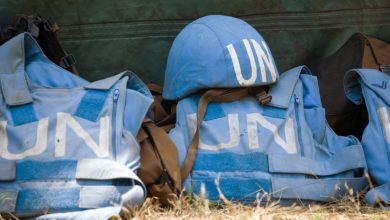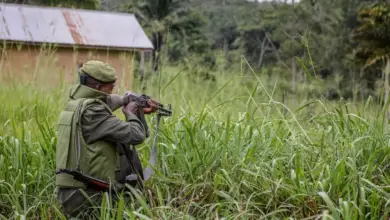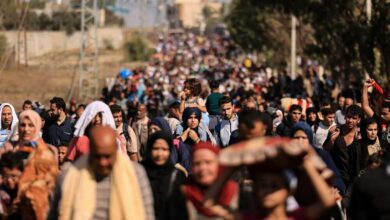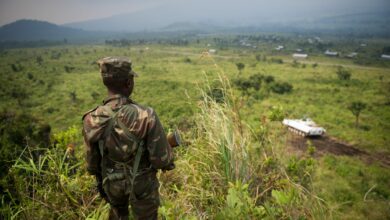The Armed Forces of the Democratic Republic of Congo (FARDC) captured 40 Allied Democratic Forces fighters inn the restive east, the United Nations mission MONUSCO said on Wednesday.
At around 10:30 p.m. (2130 GMT) on Sunday, February 9, “a joint action launched against the ADF enabled the FARDC to apprehend 40 ADF fighters near Makeke and take them to the FARDC base in Mangina,” said MONUSCO military spokesperson Lieutenant-Colonel Claude Raoul Djehoungo.
Senior FARDC officials did not confirm or deny the capture or detention of 40 ADF combatants.
The joint MONUSCO-FARDC operation came on the same day that at least seven civilians were killed in Makeke in an attack blamed on the ADF.
The main militia force operating in eastern DR Congo, the ADF has been carrying out reprisal attacks on civilians in response to an FARDC offensive against armed groups in North Kivu province launched on October 30.
More than 300 people have been killed in attacks attributed to the ADF since the army began its operations.
But it is only one of several militias operating in the area – a legacy of the two 1990s Congo wars that dragged in DR Congo’s neighbours into a regional conflict.
Beni territory, in North Kivu province which borders Uganda and Rwanda, has been particularly affected by militia violence.
Formed in 1995, the ADF is a Ugandan-led but DR Congo-based militant group that mainly operates in the border area of North Kivu province. It is thought to have killed hundreds of civilians and more than 20 U.N. peacekeepers, but although it is often blamed for killings, robberies and kidnappings, numerous armed groups operate in the region and it is often difficult to be certain who the true assailants are.
Last April, Islamic State formally recognized its Central Africa Province in Democratic Republic of Congo, when its centrally controlled media outlets began to attribute attacks to ISCAP, and during his first video appearance in five years, the late ISIS leader Abu Bakr al-Baghdadi was seen viewing a document entitled “Wilayat Central Africa.”
There was earlier evidence that ISIS had ties to the Allied Democratic Forces, but it is unclear if the new ISIS affiliate is the ADF, a splinter group, or a different organization.
According to U.N. report published in February, several member states believe that the ISIS affiliate in Somalia’s Puntland state is now the command centre for “affiliates in the Democratic Republic of the Congo and Mozambique and is in charge of loose networks of supporters of the affiliates.”
“The ultimate goal is to consolidate a triad connection of the operations of ISIL [Islamic State] affiliates in Eastern, Southern and Central Africa,” the report said, adding that some member states reported that ISCAP “now comprises about 2,000 local recruits and a large contingent of foreign terrorist fighters.”
On February 6, the U.N. added Seka Baluku, also known as Musa Baluku, to its DR Congo sanctions list. Describing the Ugandan national as a longtime ADF member and previously second in command, the sanctions committee said that Baluku is now overall leader of the ADF, after he took over the group’s leadership from founder Jamil Mukulu in 2014. Mukulu was arrested in Tanzania in 2015 and extradited to Uganda.
The United States sanctioned Musa Baluku in December 2019, describing him as “the leader of the ADF, an entity that has engaged in, or whose members have engaged in, serious human rights abuse related to his tenure.” A further “five key ADF members who have materially assisted the ADF through recruitment, logistics, administration, financing, intelligence, and operations coordination” were also added to the U.S. sanctions list.
Neither sanctions listing mentioned a link to ISIS.
With reporting from AFP


